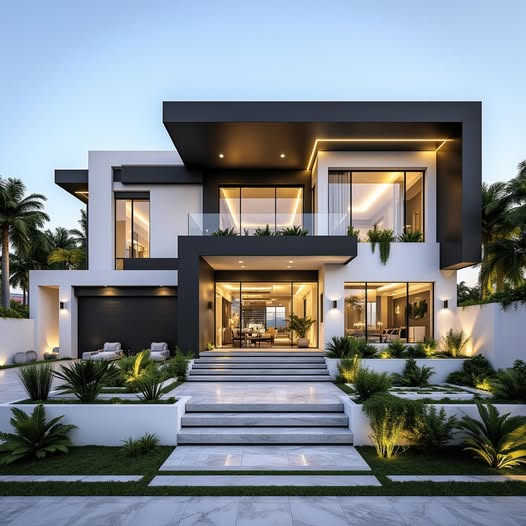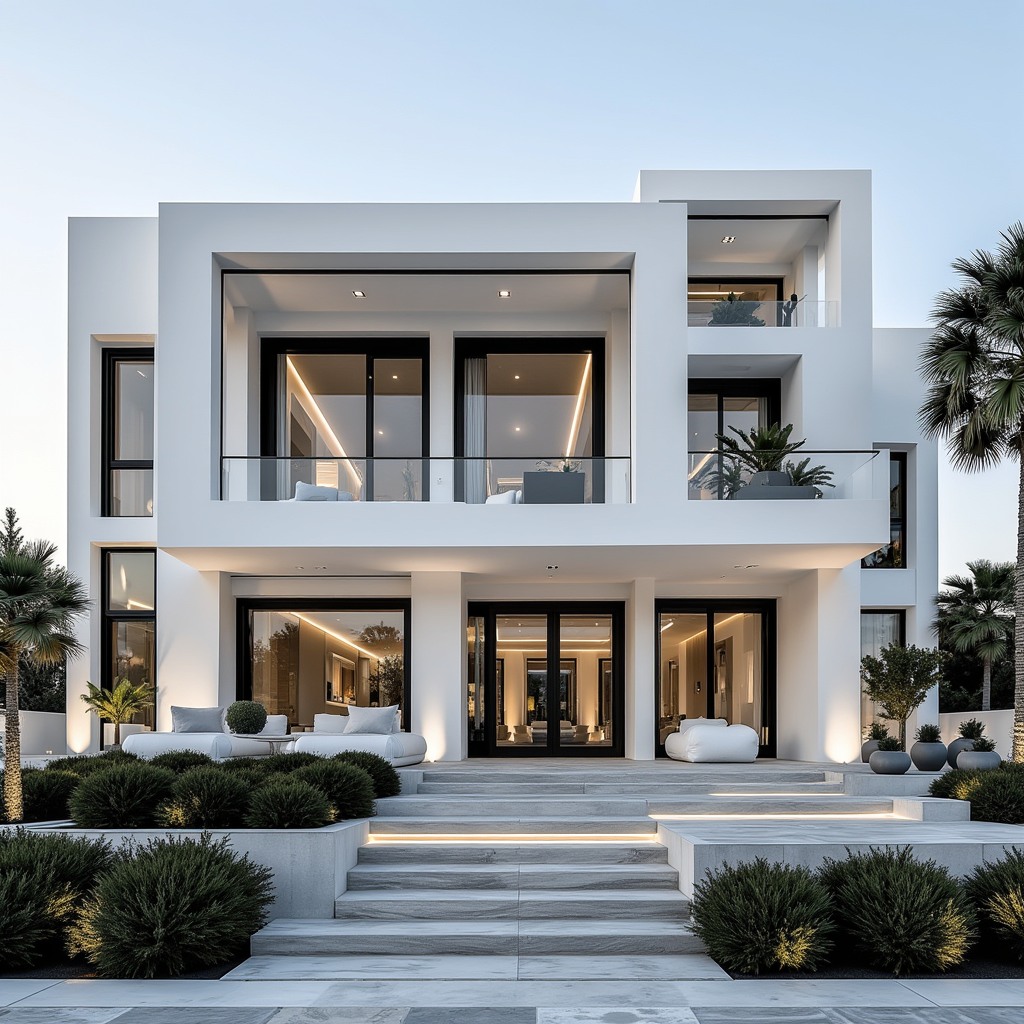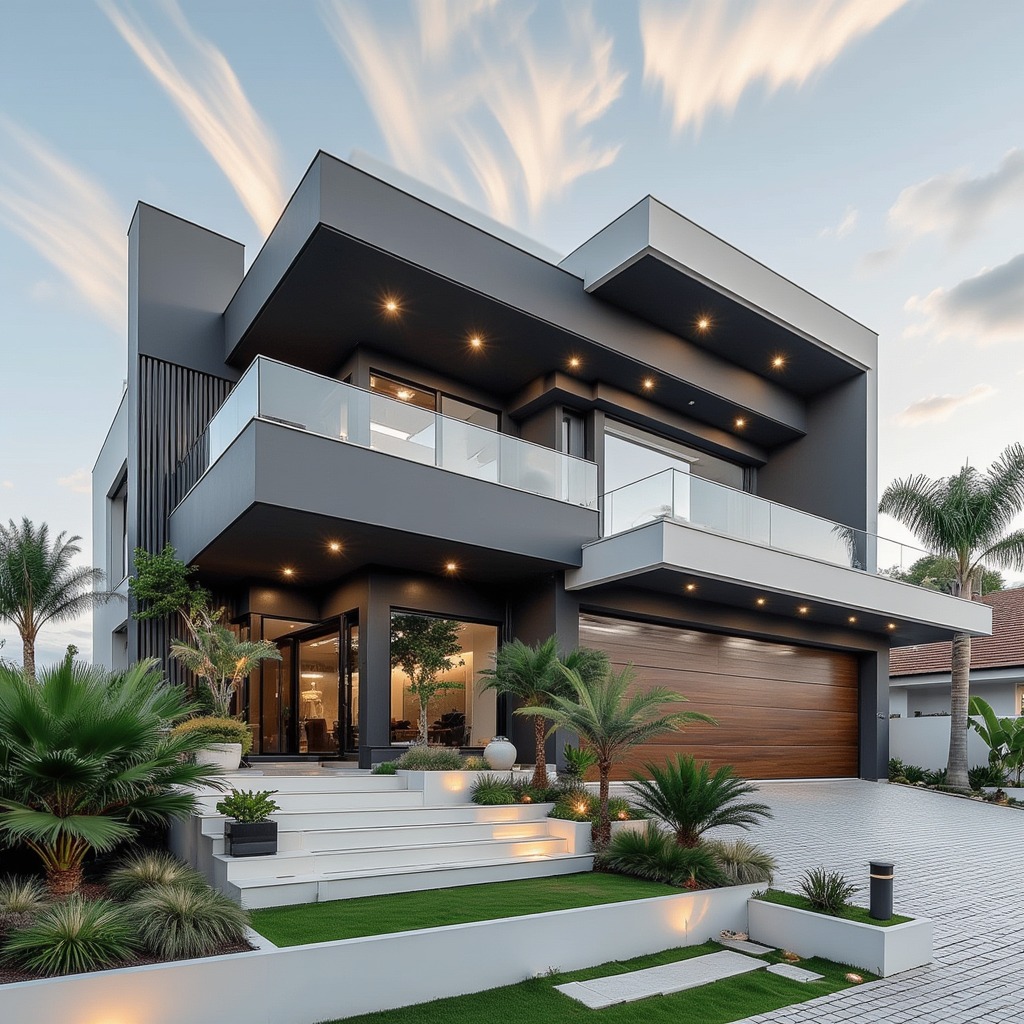In the evolving world of contemporary residential architecture, a remarkable transformation is redefining the essence of modern luxury homes. Today’s cutting-edge residences go far beyond traditional shelter; they stand as artistic masterpieces that seamlessly combine geometric design, functional innovation, and indoor-outdoor living. These architecturally sophisticated homes reflect a thoughtful balance of form, function, and sustainability, offering homeowners a harmonious lifestyle deeply connected to their environment. As modern architects and designers embrace minimalism, precision, and nature integration, contemporary luxury living has become a true expression of design philosophy and the art of living well.
In the evolving landscape of contemporary residential design, we witness a profound transformation in how architects and designers approach luxury living. Today’s modern homes transcend traditional notions of shelter, emerging as sophisticated expressions of lifestyle, philosophy, and artistic vision. These architectural masterpieces represent more than mere dwellings—they embody a comprehensive approach to living that seamlessly integrates form, function, and environmental harmony.

The Foundation of Geometric Precision
The cornerstone of contemporary residential architecture lies in its unwavering commitment to geometric clarity and clean lines. This design philosophy represents a deliberate departure from ornate embellishments and decorative excess, instead finding beauty in the purity of shape and precision of execution. Modern luxury homes showcase stark white planes intersecting with dark frames, creating visually arresting compositions that command attention through their simplicity.
The geometric approach extends beyond mere aesthetics—it creates a sense of order and tranquility that permeates the entire living experience. Balconies emerge as sleek cantilevers, windows are meticulously framed as perfect rectangles or squares, and entire wings of houses appear as interlocking blocks. This creates a dynamic yet balanced visual rhythm that speaks to both the eye and the soul.
“As the American Institute of Architects (AIA) highlights, contemporary residential architecture embraces sustainable design principles while pushing the boundaries of modern luxury homes.”
The psychological impact of geometric precision cannot be understated. These clean lines and sharp angles create an environment of clarity and focus, allowing residents to experience a sense of calm amidst the chaos of modern life. The structural elements themselves become the primary decorative features, eliminating the need for superfluous ornamentation while maintaining visual interest through the interplay of form and shadow.

Material Mastery and Minimalist Palettes
Contemporary residential architecture embraces a sophisticated material vocabulary that emphasizes quality over quantity. The dominant narrative revolves around high contrast and understated sophistication, with whites, greys, and blacks forming the foundational canvas. This restrained palette serves multiple purposes: it highlights architectural forms, creates timeless appeal, and allows the play of light and shadow to become an integral part of the building’s dynamic façade.
Premium materials such as smooth stucco, polished concrete, and expansive glass are carefully selected not only for their contemporary appeal but also for their ability to create clean surfaces that reflect light and enhance the sense of volume. The occasional introduction of natural wood serves as an organic counterpoint, preventing the minimalist aesthetic from feeling sterile while adding warmth and texture.
The strategic use of materials extends to their practical benefits. Polished concrete floors provide thermal mass for energy efficiency, while expansive glass walls maximize natural light penetration, reducing the need for artificial illumination during daylight hours. This thoughtful material selection demonstrates how contemporary architecture successfully marries aesthetic excellence with practical functionality.
As the American Institute of Architects (AIA) highlights, contemporary residential architecture embraces sustainable design principles while pushing the boundaries of modern luxury homes.”

Dissolving Boundaries: Indoor-Outdoor Integration
Perhaps the most revolutionary aspect of contemporary residential design is its profound integration of indoor and outdoor living spaces. The traditional barriers between interior sanctuary and external natural beauty are intentionally dissolved, creating expansive, flowing environments that adapt to modern lifestyles and changing needs.
Colossal glass walls and sliding door systems serve as porous membranes that invite the outside in, transforming living areas into continuous spaces that extend seamlessly onto patios, decks, and garden areas. This integration acknowledges that contemporary luxury extends beyond square footage—it encompasses a deep connection to the surrounding environment, offering residents the freedom to entertain, relax, and live both inside and out with equal comfort and style.
The benefits of this approach are multifaceted. Psychologically, the connection to nature and outdoor spaces promotes well-being and reduces stress. Practically, it extends the usable living space, particularly valuable in urban environments where outdoor space is at a premium. Socially, it creates versatile entertaining areas that can accommodate both intimate gatherings and large celebrations.
The Poetry of Light and Shadow
Light serves as a silent protagonist in contemporary residential architecture, playing a crucial role in defining spaces and creating atmosphere throughout the day. During daylight hours, vast expanses of glass flood interiors with natural light, minimizing the need for artificial illumination while creating bright, airy atmospheres that enhance the sense of spaciousness.
The interaction between light and architectural surfaces creates a constantly evolving visual experience. Light reflecting off pristine white surfaces creates a sense of purity and cleanliness, while deep shadows cast by overhangs and recesses add drama and depth to façades. This dynamic interplay ensures that the building’s appearance changes throughout the day, maintaining visual interest and preventing monotony.
As evening approaches, artificial lighting takes over, transforming homes into glowing beacons of warmth and welcome. Recessed lighting embedded in overhangs and ceilings, combined with accent lights strategically placed within landscaping beds, creates dramatic effects that highlight architectural features while providing functional illumination. This sophisticated lighting design extends the usability of outdoor spaces well into the night, making patios and pathways feel safe and inviting.

Landscape as Architecture’s Partner
Contemporary residential design recognizes landscaping as an integral component of the architectural vision, not merely an afterthought. The soft textures of carefully selected foliage provide a vital counterpoint to sharp architectural lines, creating visual balance and enhancing the overall composition.
Meticulously planned planting beds, filled with lush, sculptural greenery, soften hard surfaces while creating visual interest and depth. The strategic placement of palm trees and other distinctive plants instantly evokes specific climates and lifestyles, contributing to the overall narrative of luxury and relaxation.
Water features play a particularly important role in contemporary landscape design. Expansive pools, reflecting ponds, and water walls add dynamic, reflective elements that enhance tranquility while providing cooling effects in warmer climates. The sound of moving water creates a natural soundtrack that masks urban noise while promoting relaxation.
Even simple elements like well-maintained lawns and low-lying shrubs are curated to enhance the overall composition, demonstrating that the immediate environment is an integral part of the architectural vision, designed to extend the aesthetic appeal beyond the building’s footprint.

The Ceremony of Arrival
The design of entrances and pathways in contemporary residential architecture contributes significantly to the sense of grandeur and exclusivity. These carefully orchestrated sequences create a journey of discovery, building anticipation and preparing visitors for the luxurious experience that awaits within.
Wide, tiered steps, dramatic staircases flanked by illuminated planters, and inviting paths across polished surfaces all contribute to this sense of ceremony. These pathways are often illuminated with discreet ground-level lighting, guiding visitors while highlighting the architectural journey and creating a subtle yet impactful sense of exclusivity.
The approach to the home becomes part of the living experience, extending the architectural narrative beyond the building itself to encompass the entire property. This attention to the arrival sequence demonstrates the comprehensive nature of contemporary residential design, where every element is considered and integrated into the overall vision.
Sustainability and Future-Forward Thinking
Modern luxury homes increasingly incorporate sustainable design principles without compromising aesthetic excellence. High-performance glazing systems, advanced insulation materials, and energy-efficient lighting systems reduce environmental impact while maintaining the desired aesthetic qualities.
The integration of renewable energy systems, such as solar panels and geothermal heating, demonstrates how contemporary architecture can be both environmentally responsible and visually striking. These systems are often integrated seamlessly into the architectural design, becoming invisible elements that contribute to the home’s performance without detracting from its appearance.
Conclusion: Living as Art
Contemporary residential architecture represents a mature synthesis of aesthetic excellence, functional innovation, and environmental consciousness. These homes demonstrate that luxury in the modern era is not about excess or ostentation, but about thoughtful design that enhances the human experience while respecting the natural environment.
Through their commitment to geometric purity, sophisticated material palettes, seamless indoor-outdoor integration, dynamic light play, harmonious landscaping, and ceremonial entrances, these residences offer a refined vision of contemporary luxury. They stand as powerful examples of how architectural excellence can transcend mere shelter, transforming living spaces into breathtaking statements of design, comfort, and a profound connection to their surroundings.
In the realm of modern architecture, true luxury lies in the intelligent interplay of form, function, and the subtle art of living well. These homes represent not just places to live, but carefully crafted environments that embody the very essence of contemporary lifestyle and design philosophy.
Frequently Asked Questions
What is contemporary residential architecture?
Contemporary residential architecture refers to modern…
📌 Frequently Asked Questions
Q1. What is contemporary residential architecture?
Contemporary residential architecture refers to modern home designs that emphasize clean lines, geometric precision, sustainability, and a seamless connection between indoor and outdoor spaces.
Q2. How do modern luxury homes differ from traditional homes?
Modern luxury homes focus on minimalist design, open floor plans, innovative materials, and energy efficiency, creating spaces that blend style, comfort, and environmental harmony.
Q3. Why is indoor-outdoor living important in modern home design?
Indoor-outdoor living expands usable space, improves natural light and ventilation, connects homeowners with nature, and supports a healthier, more relaxed lifestyle.
Q4. What are key features of sustainable contemporary homes?
Features often include high-performance glazing, energy-efficient insulation, solar panels, smart home systems, and materials that reduce environmental impact while maintaining luxury aesthetics.
Written by: Sarah Thomas, Architectural Writer
Edited by: Michael Patel, Senior Editor, Archtra.com
Explore more design trends at Archtra.com.